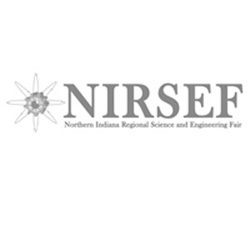
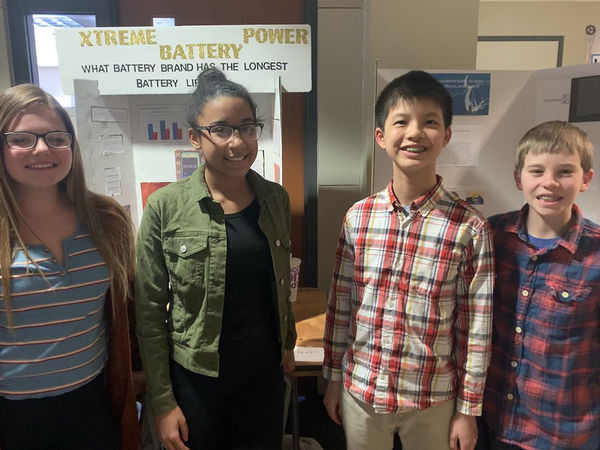
Seventh graders Olivia Demaegd, Amaya DeArmond, Maclean Miller, and Ray Fan
From third graders entering their first projects to seniors about to graduate from high school, the 2020 Northern Indiana Regional Science and Engineering Fair (NIRSEF) recently fostered curiosity and empirical thinking in students of all ages.
Marian High School sophomore Madelyn Cerney remembers that her interest in science started young.
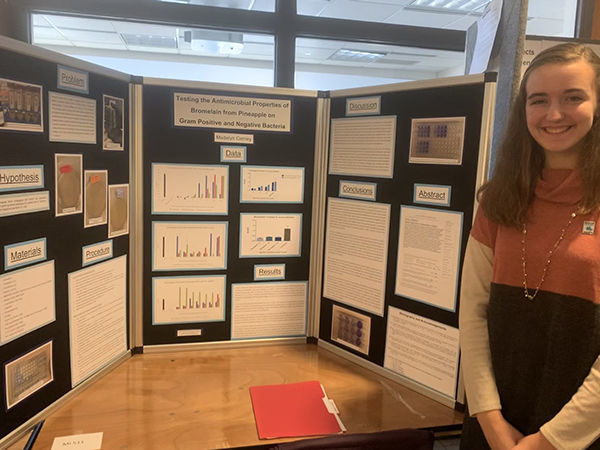
“I started science fair in fifth grade, because my fifth grade teacher instilled the love for science,” Cerney said. “I really like finding answers to things that I don’t know the answers to, so it’s really interesting for me to see that the things that you expect to happen might not happen, and things that you would never have thought of can easily happen.”
On February 29th, Cerney was one of over 200 students from 46 area elementary, middle, and high schools who participated in 21 different science and engineering categories at NIRSEF. This year, instead of completing on her project “Testing the Anti-Microbial Properties of Bromelain from Pineapple on Gram Positive and Negative Bacteria” from home, she took the opportunity to work in the lab of Shaun Lee, Monahan Family Associate Professor of Rare and Neglected Diseases at Notre Dame.
Cerney earned a second place in the microbiology category, the Purdue Agriculture Award, and the St. Mary’s College Dineen Award for her experiment. Her favorite part of the experience was seeing the design and protocol opportunities offered by university laboratories and how researchers like her advisor, postdoctoral student Henry Vu, work every day.
However, young scientists also discovered that they did not need specialized lab equipment to conduct experiments. Northside Middle School seventh-grader Aangee Mehta investigated the best fertilizers to grow algae, a renewable source of biofuel. In addition to earning a first place in plant sciences, a St. Mary’s College Dineen Junior Award, and a Ricoh Sustainable Development Award, Mehta also learned the hazards of doing at-home experiments.
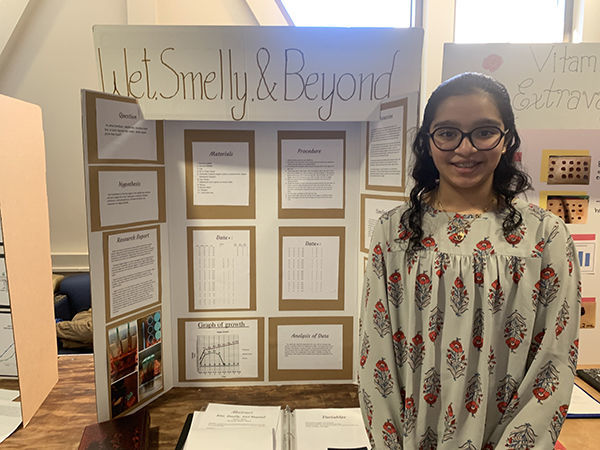
“You should never make any fertilizer teas in your house, because they always have a trace of manure in them,” she warned. “So when you boil and make it, it always releases a really terrible smell, so the whole house smells terrible.”
Amy Stark, Director of the DNA Learning Centers and Regional Fair Executive Director, explained that all of this fascinating, challenging, and even smelly research will help students find future academic success.
“Participating in the science fair allows young scientists to gain skills in presenting and discussing their work with others,” Stark wrote. “While they are completing their projects, young scientists are able to take the scientific method and translate it into real life to make new and exciting discoveries in an area that interests them.”
Mehta also acknowledged the access to the scientific community that NIRSEF provides, saying, “I wanted to do science fair, because I really like meeting a lot of new people and having my project looked over by professionals.”
In fact, Mehta’s and Cerney’s stellar projects gave them an opportunity to present their research to an even larger audience. Both were members of a group of 20 NIRSEF participants selected to advance to statewide Hoosier Science and Engineering Fair, held in a virtual format due to the COVID-19 pandemic.
Although students participated in NIRSEF three weeks before Indiana’s statewide coronavirus lockdown, the fair also took place in a new location this year, for a much more positive reason. Stark explained that her team chose to hold the NIRSEF in DeBartolo Hall instead of its previous venue, the Stepan Center, because “primarily we wanted to have a better overall experience for the students participating and their families.” DeBartolo Hall offered superior acoustics, better judges’ rooms, an awards ceremony auditorium, and spaces for elementary school science demos, making the fair more interactive and comfortable for all.
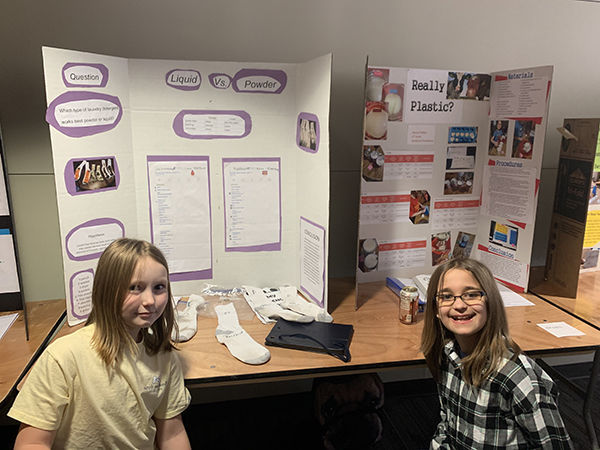
In addition to building connections with professionals in the field, students also had the opportunity to form new friendships in this new location. Hannah Kidder, a fourth grade student at Woodland Elementary, and Raegan Bicker, a fourth grade student at Rolling Prairie Elementary School, met while presenting their projects. Kidder synthesized cason plastic using just milk and vinegar and learned the importance of a two-level experiment, where the results of the first phase of her project determined how she conducted the second. She won a first place ribbon in the chemistry category, and the Mario Borelli Award. Bicker also earned a first place in chemistry, when she compared powdered and liquid laundry detergent. “I really wondered which type would work better,” she said, “so in the future I would know what to use.”
As well as finding inspiration in their everyday lives, students also gained motivation from larger issues, like the environment. Sol Dumuje and Nathan Nyarko, seventh graders at Northside Middle School, studied how temperature change affects voltage flow in solar panels. They won a first place in the earth and environmental sciences category for their efforts. Both young researchers enjoyed observing how small changes in variables affected their results, a sentiment echoed by scientists of all ages at NIRSEF. But they also had a far-reaching vision for their discoveries.
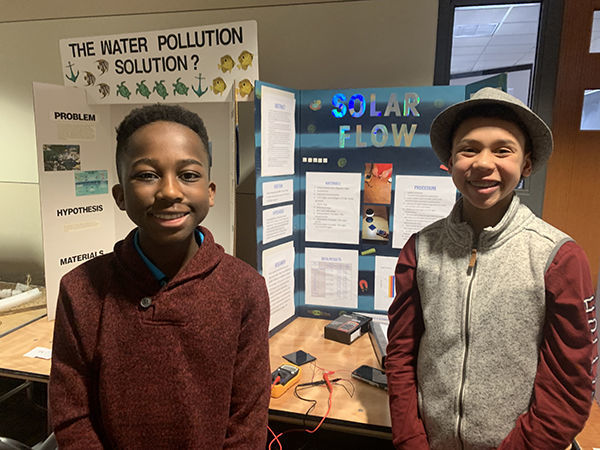
“We thought that we can apply this in real life for buildings, so that they could put solar panels in different environments, and then they could receive more efficient electricity,” Nyarko said.
As NIRSEF inspired students to think big, Stark compared the fair’s updated location to the personal and intellectual growth experienced by talented young participants.
“Changing the venue in some ways was like a science experiment; we wanted to improve the event, but there are always challenges that appear whenever you try something new,” she wrote. “However, without experiments you can never discover new things.”